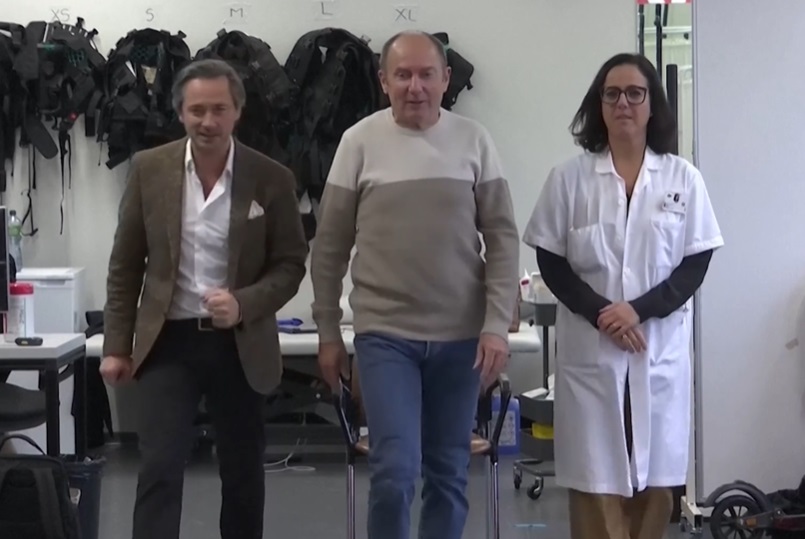Marc Gauthier suffers from Parkinson’s illness.
His limbs and legs quake, his muscles weaken, and his nervous system is affected by the sickness.
It had been some time since the 63-year-old Gauthier was allowed to leave his house. But that was before he was the first to acquire a brand-new medical equipment made in Switzerland, which significantly increased his gait.
Gauthier was treated at Lausanne University Hospital (CHUV), in Switzerland, with a medical device known as a neuroprosthetic. An electrode field, a portion of the apparatus, is positioned up against the spinal cord, a portion of the nervous system that runs through the back. Another component of the apparatus, which is buried beneath his skin beneath his stomach, stimulates his spinal cord with electricity to activate his leg muscles. An electrical impulse generator is what it’s known as.
“It changed my life because I’m now independent,” Bordeaux, France native Gauthier stated while he sat with his physicians at CHUV. “I can go outside and do errands. I even walk there.”
The World Health Organization discovered that throughout the previous 25 years, the number of patients with Parkinson’s disease has doubled. Global estimates indicated that in 2019, the disease affected over 8.5 million people.
Among the physicians spearheading the initiative is Grégoire Courtine. He claimed that Gauthier is now able to walk as he would have in the absence of the illness thanks to the electrical pulses that were given to his spinal cord.
“We strongly believe that many individuals could benefit from this therapy,” Courtine stated. He holds professorial positions at CHUV, the University of Lausanne, and the Swiss Federal Institute of Technology Lausanne (EPFL).
Recently, the work was published in Nature Medicine. According to Courtine’s team’s research at the NeuroRestore facility, patients with more advanced Parkinson’s disease may benefit from a wider application of this technology. Many people with Parkinson’s disease that is further advanced have significant mobility issues.
The medical device’s designer, Onward Medical, is led by Dave Marver as CEO. He said that the gadget bore similarities to implantable defibrillators and other pain management devices. However, he said that the manner the gadget addresses the spinal cord makes it unique.
“For the health care system, it will look and feel familiar, but it will offer therapy that doesn’t exist today,” he stated.
Next year, Courtine’s team intends to test the gadget on six additional patients and conduct further study.
The physician who operated on Gauthier and co-director of NeuroRestore is Jocelyne Bloch. According to her, people’s ability to go out, mingle, and accomplish more things as a result of this therapy will greatly improve “their daily activities and quality of life.”
